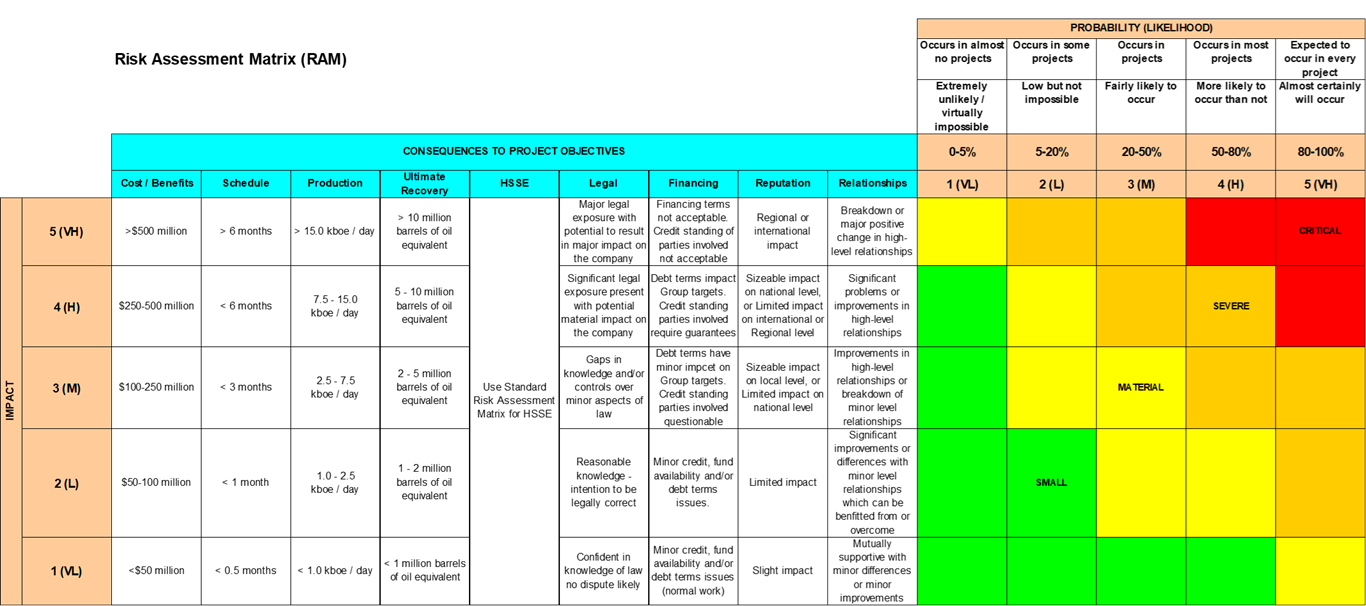Project Risk Register Template in Excel (Free Download)
Effective risk management is vital for successful project delivery. A Risk Register provides a structured way to capture, assess, and monitor project risks throughout the lifecycle. This page explains how a risk register works, why it is important, and how you can use our free downloadable template to manage risks in your projects.
What Is a Risk Register?
A Risk Register (also called a risk log) is a structured tool used to systematically capture, evaluate, and track risks throughout the entire project lifecycle. It acts as a central repository that ensures every identified risk is documented, assessed, and assigned to an owner for follow-up. Rather than treating risks as isolated issues, the risk register provides a holistic view of potential threats and opportunities, enabling teams to manage uncertainty in a transparent and controlled manner.
A well-prepared risk register typically includes key details such as the description of the risk event, root cause, potential consequences, likelihood and impact ratings, overall severity, mitigation or contingency actions, and the responsible individual or department. These details allow the project team to prioritize high-risk areas, allocate resources effectively, and maintain alignment with project objectives.
Beyond serving as a tracking document, the risk register is also a communication tool. It ensures that project stakeholders, contractors, and management have a shared understanding of the most critical risks and the actions being taken to address them. This promotes accountability, fosters collaboration, and reduces the chances of unpleasant surprises during execution.
By consistently using a risk register, project teams move from reactive firefighting to proactive risk management. This discipline helps safeguard key project outcomes such as cost, schedule, scope, quality, and health, safety, and environmental (HSE) performance, which are especially critical in complex industries like oil and gas, construction, and EPC projects.
Key Components of the Risk Register
Our risk register template is designed to be simple, practical, and aligned with industry best practices. It includes the following key columns:
- Risk ID: Unique reference for tracking each risk.
- Risk Description: Clear statement of the event, its cause, and consequence.
- Probability & Impact: Ratings to evaluate likelihood and severity.
- Risk Score: Automatically calculated to prioritize risks.
- Mitigation/Response Plan: Actions to reduce, transfer, avoid, or accept the risk.
- Risk Owner: Assigned person responsible for monitoring and updating.
- Status: Open, Closed, or Mitigated – to track progress.
Risk Assessment Matrix (RAM)
To make risk prioritization easier, the template includes a Risk Assessment Matrix (RAM). This is a visual grid mapping probability against impact to highlight critical risks that require immediate attention. The RAM allows project teams to focus resources where they matter most.

Benefits of Using a Risk Register Template
- Provides a structured approach to identifying and managing risks.
- Improves communication by keeping stakeholders informed of potential issues.
- Prioritizes risks based on severity and likelihood.
- Enables proactive action rather than reactive crisis management.
- Supports compliance with project management standards and client requirements.
Download the Free Risk Register Template
You can access our free, ready-to-use Risk Register Template (Excel) on the downloads page. This tool will save you time and provide a professional framework for effective project risk management.
Go to Downloads Page